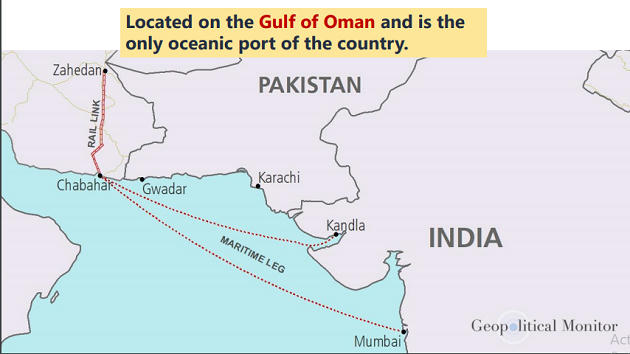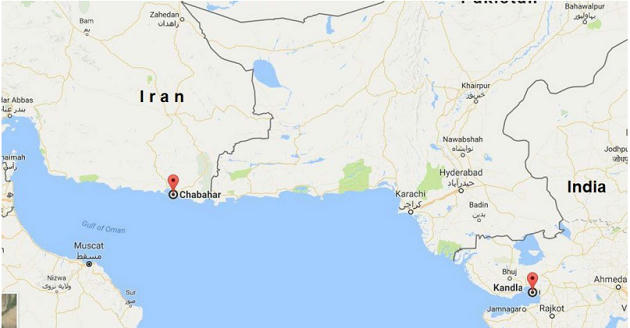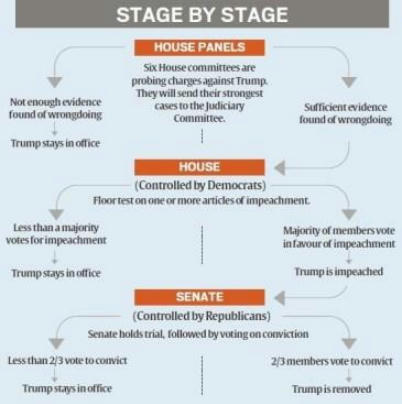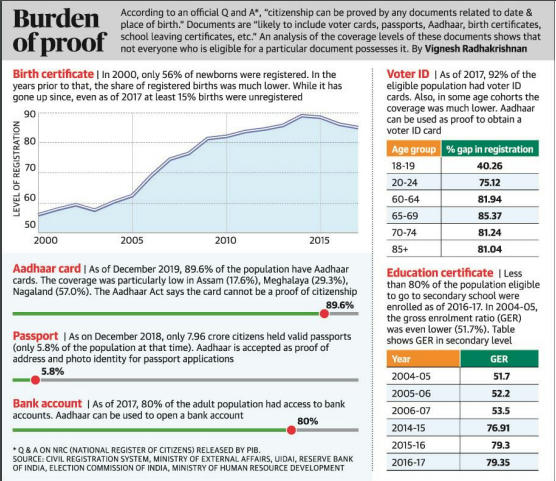Table of Contents
Claims and counterclaims
- On November 20, 2019, in a reply to a question by Rajya Sabha MP Swapan Dasgupta, Home Minister Amit Shah said that the NRC exercise would be carried out across India. He said that the gazette notification of September 7, 2015, which was made in the case of Assam, would be applicable to the rest of India as well. The Prime Minister’s remarks on the “nationwide NRC” therefore contradict what the Home Minister has been saying on the issue.
- “Nationwide NRC” also finds a mention in the BJP’s 2019 election manifesto. Under the section ‘Combating Infiltration’, the manifesto clearly mentions that NRC will be implemented across the country. The manifesto says, “There has been a huge change in the cultural and linguistic identity of some areas due to illegal immigration, resulting in an adverse impact on local people’s livelihood and employment. We will expeditiously complete the National Register of Citizens process in these areas on priority. In future we will implement the NRC in a phased manner in other parts of the country”.
- The Prime Minister also denied the existence of detention centres in India. In response to a question by Md. Nadim Haque in the Rajya Sabha on December 11, 2019, the Minister of State for Home Affairs, Nityanand Rai, said that the Central government had circulated a document titled Model Detention/Holding Centre Manual to all State and Union Territories on January 9, 2019. He also revealed in another answer in the House that, as on November 22, 2019, Assam already had six functioning detention centres with 988 foreigners lodged in them.
- “These four sections are some of the busiest routes on Railways, with heavy traffic. These will act as a pilot for signal modernization across the 70,000 km network of the Railways,” Mr. Kumar said.
- The modernization of the signaling system will include implementation of technologies such as the automatic train protection system that helps in adhering to permissible speed limits without driver intervention and the 4G-based mobile train radio communication system, which can be used for emergency communications.
- The implementation of these new systems will improve safety, reduce congestion, increase line capacity and improve punctuality, Mr. Kumar said.
- Besides a centralized traffic control system similar to the air traffic control system, a remote diagnostic and predictive maintenance system will be implemented.
MCQ
- Chabahar Port is Located on the Gulf of Persia and is the only oceanic port of the country Iran.
- TIR Convention is followed to harmonize transit, roads, customs and consular matters.
Choose correct
(A) Only 1
(B) Only 2
(C) Both
(D) None
- India, Afghanistan and Iran recently met to discuss the issues in the implementation of Chabahar port in Iran.
- This was the second meeting of the Follow-up Committee for implementation of the trilateral Chabahar Agreement between India, Afghanistan and Iran at the level of Joint Secretary/ Director General.
- Outcomes of the meet:
- The three countries have decided to open Mormugoa and New Mangalore Port in addition to JNPT, Mundra, Kandla and Cochin as part of designated route under the Chabahar Agreement.
- It was agreed to finalise the protocol to harmonise transit, roads, customs and consular matters. Till that time, the TIR Convention will continue to be used for cargo movement. Located on the Gulf of Oman and is the only oceanic port of the country.


- Why Chabahar port is important for India?
- With this, India can bypass Pakistan in transporting goods to Afghanistan.
- It will also boost India’s access to Iran, the key gateway to the International NorthSouth Transport Corridor that has sea, rail and road routes between India, Russia, Iran, Europe and Central Asia.
- It also helps India counter Chinese presence in the Arabian Sea which China is trying to ensure by helping Pakistan develop the Gwadar port. Gwadar port is less than 400 km from Chabahar by road and 100 km by sea.
- With Chabahar port being developed and operated by India,
- Iran also becomes a military ally to India. Chabahar could be used in case China decides to flex its navy muscles by stationing ships in Gwadar port to reckon its upper hand in the Indian Ocean, Persian Gulf and Middle East.
- Trade benefits: With Chabahar port becoming functional, there will be a significant boost in the import of iron ore, sugar and rice to India. The import cost of oil to India will also see a considerable decline. India has already increased its crude purchase from Iran since the West imposed ban on Iran was lifted.
- From a diplomatic perspective, Chabahar port could be used as a point from where humanitarian operations could be coordinated.
- The Convention on International Transport of Goods Under Cover of TIR Carnets (TIR Convention) is a multilateral treaty that was concluded at Geneva on 14 November 1975 to simplify and harmonise the administrative formalities of international road transport. (TIR stands for “Transports Internationaux Routiers” or “International Road Transports”.) The 1975 convention replaced the TIR Convention of 1959, which itself replaced the 1949 TIR Agreement between a number of European countries.
- The conventions were adopted under the auspices of the United Nations Economic Commission for Europe (UNECE). As of December 2018, there are 76 parties to the Convention, including 75 states and the European Union.
MCQ
- In USA The House of Representatives (Lower House) has the “the sole power of impeachment” while the Senate (Upper House) has no role in it.
- If the president is found guilty & removed, the Vice President also has to step down there
Choose correct
(A) Only 1
(B) Only 2
(C) Both
(D) None
- Donald Trump has become the third President to be impeached by the US House. He was accused of enlisting foreign government to investigate political rival before 2020 election.
- So far only two American presidents have been impeached. In 1998, President Bill Clinton was impeached on charges of sexual relationship with his intern. However, the senate acquitted him. Before him, in 1868, President Andrew Johnson was impeached. He was acquitted by one vote in the Senate.
- In 1974, President Nixon resigned over water gate corruption charges. The judiciary committee approved the articles of impeachment before the house could even pass them.
What is Impeachment?
- Impeachment is a provision that allows Congress to remove the President of the United States.
Under the US Constitution:
- The House of Representatives (Lower House) has the “the sole power of impeachment” while the Senate (Upper House) has “the sole power to try all impeachments”.
- The Chief Justice of the US Supreme Court has the duty of presiding over impeachment trials in the Senate.
Grounds for impeachment:
- The President can be removed from office for “treason, bribery, or other high crimes and misdemeanors”.
- Essentially, it means an abuse of power by a highlevel public official. This does not necessarily have to be a violation of an ordinary criminal statute. Historically, in the US, it has encompassed corruption and other abuses, including trying to obstruct judicial proceedings.
- It begins with an investigation by a House committee. If they find that there is enough evidence of wrongdoing, it will refer the matter to the full House.
- HOUSE VOTE:
- When the full House votes, if one or more of the articles of impeachment gets a majority vote, the President is impeached. Next, the proceedings move to the Senate.
- SENATE TRIAL & VOTE: The Senate holds a trial, overseen by the chief justice of the Supreme Court. A team of lawmakers from the House, known as managers, play the role of prosecutors. The President has defense lawyers, and the Senate serves as the jury. If at least twothirds of the Senators present find the President guilty, he is removed and the Vice President takes over as President.

- Mark Twain famously quipped that “the reports of my death are greatly exaggerated”. With the retirement of two of the remaining three members of the World Trade Organization (WTO) Appellate Body on December 10, and a veto by the United States on fresh appointments, the “crown jewel” of the WTO been rendered dysfunctional. Although the demise of the Appellate Body has struck a blow to the rule of law, those drawing up the obituary of the WTO in the aftermath of its demise may have greatly exaggerated its consequences.
- The consequences of the Appellate Body’s fall are overstated for a number of reasons. First, because this effectively marks a return to the dispute settlement system under the General Agreement on Tariffs and Trade (GATT) which, on the whole, proved surprisingly successful in resolving disputes. Second, most of the disputes at the WTO concern rules that are actually “self-enforcing”, with the Appellate Body only policing its enforcement by domestic authorities. Finally, many States have conceived “alternative” strategies to overcome difficulties arising out of the absence of a functioning Appellate Body.
- The Appellate Body was set up in 1995 as a “safety valve” against erroneous panel reportsin return for the membership agreeing to adopt reports using the “reverse consensus” rule in lieu of the “positive consensus” rule. Under the erstwhile positive consensus rule, reports issued by panels composed to hear disputes under GATT, could be adopted only if each of the contracting states favoured its adoption. This effectively handed a veto to the losing state.
- However under the reverse consensus rule, the report would be automatically adopted, unless each member objected to the adoption of a report. To eliminate the likelihood of erroneous panel reports, the membership proposed the establishment of an Appellate Body, and the adoption of the report was postponed till after such appeal was adjudicated by the Appellate Body.
Return to GATT
- The fall of the Appellate Body effectively marks a return to the previous system as it hands states an opportunity to appeal an adverse panel ruling and effectively indefinitely delay its adoption. While one would be forgiven to think that states under the GATT regime would almost always veto unfavorable reports, a remarkable 71% of panel reports were adopted using the positive consensus rule. Even where panel reports were not adopted by states they served as a basis for the parties to “bilaterally” resolve their disputes in a mutually satisfactory manner. In a vastly changed global economic landscape, the re-emphasis on diplomatic solutions in lieu of judicialized solutions to resolve inter-state trade disputes may not be an entirely bad outcome.
Trade remedy matters
- The majority of the disputes at the WTO concern trade remedy matters. In such matters, if a state violates the rules, for example those concerning dumping of goods or grant of subsidies, affected states can without recourse to the WTO, adopt countermeasures such as imposition of anti-dumping and countervailing duties. The dispute resolution mechanism primarily aims to police the adoption of such countermeasures, namely whether they were warranted and otherwise imposed consistently with the rules. As trade scholar Pauwelyn notes, the mechanism is geared to address “over-enforcement” rather than “under-enforcement” of WTO rules. While the fall of the Appellate Body may see the adoption of more unilateral sanctions by states, possibly leading to increased trade wars, it will not render the WTO rules unenforceable. The threat of reciprocal sanctions may in fact serve to encourage states to remain compliant with the rules even in the absence of a functional Appellate Body at the helm of the dispute mechanism.
Alternative pathways
- Finally, although the membership could not prevent the fall of the Appellate Body as we know it; several states have adopted ad hoc solutions. States such as Indonesia and Vietnam have, through a no appeal pact, agreed in advance not to appeal the ruling of the panel in the dispute between them, effectively waiving their right of appeal. The European Union (EU), Norway and Canada have agreed on an interim appeal system for resolving any disputes through arbitration using Article 25 of the dispute settlement understanding in a process mirroring that of the Appellate Body with former Appellate Body members appointed as arbitrators.
- The EU has even threatened to launch countermeasures under general international law for countries that lose at the panel stage but refuse recourse to the interim appeal system under Article 25 of the dispute settlement understanding and instead appeal the report “in limbo” with a view to avoid the adoption of the report altogether. Although the overall effectiveness of such alternative strategies to overcome the demise of the WTO Appellate Body is uncertain, they do represent good faith efforts by some members at resolving future trade disputes.
- In sum although the fall of the WTO Appellate Body represents a turbulent period in the history of trade disputes adjudication, it by no means spells the end of the WTO. On the contrary it presents an opportunity to the members to rethink and “iron out some of the creases” with the present system.
- The ongoing negotiations between the United States and India in relation to the Panel report in US-Carbon Steel, where the U.S. has appealed an adverse report to a dysfunctional body, may offer an insight into how the dispute settlement system evolves.























 WhatsApp
WhatsApp